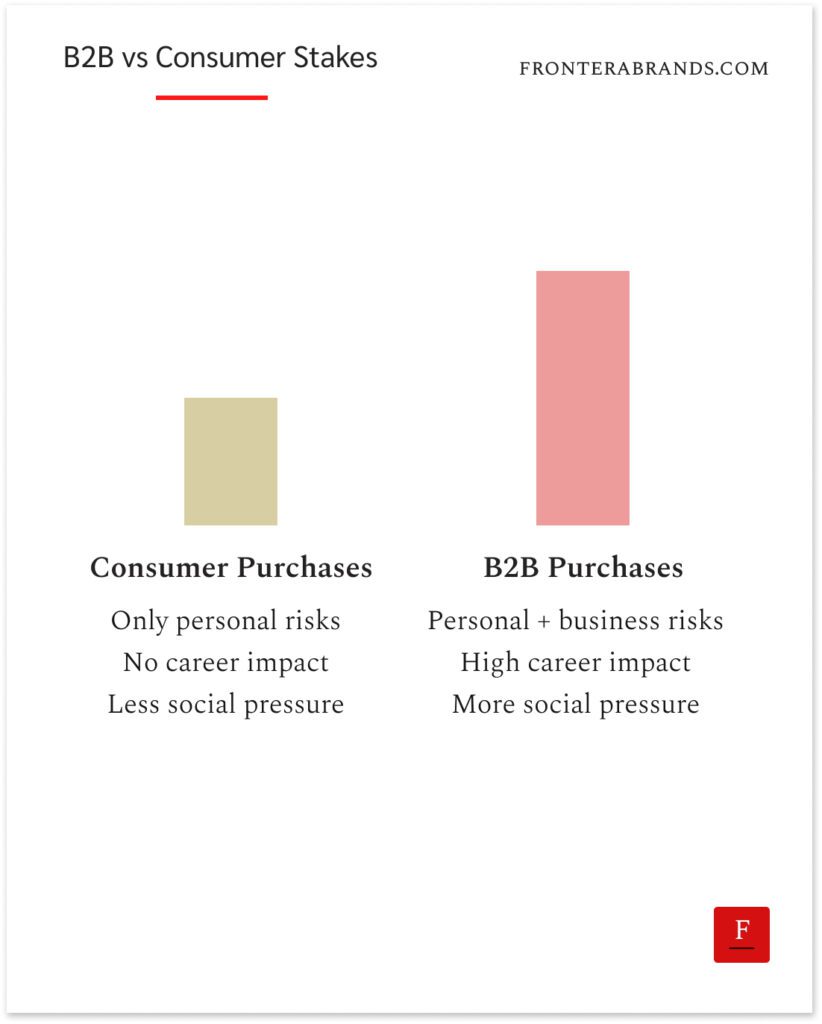There is a common misbelief about how B2B buyers vs consumers make a purchase decision.
You’ve probably heard it before.
It goes like this:
Consumers are emotional.
They are prone to impulse buying.
So they buy things without thinking rationally.
But B2B buyers are the opposite.
They are totally logical.
They evaluate options rationally and choose the best option for their companies.
Sounds good.
But it’s not true.
You know why?
First, there is a problem with its logic.
It assumes the same people who are emotional buyers as consumers suddenly become rational when they purchase for their businesses.
Doesn’t make any sense.
Humans are humans.
Plus, stakes are higher in a business environment.
So people also act based on their emotions when they buy for their business.
They get anxious about the risks of the purchase — whether legal or related to their careers.
They imagine possible success and how it might change their lives.
Or they just get tired of listening to their direct reports complain about the same issue meeting after meeting and decide to buy a solution to fix it.

So where am I getting at?
If B2B buyers also purchase based on emotions, that means one thing.
To present your brand in a compelling way, you have to see the world through their eyes.
You have to understand the underlying reasons why they look for a solution.
So you can connect your offer to these emotions with your messaging.
You can meet them where they are.
And you can become the obvious solution.
Most B2B brands make this mistake on their websites or sales decks.
They logically talk about how great they are.
They talk about their vision.
And they list all the services they deliver.
It’s all about them.
But for prospects, it’s like going on a date with someone who only talks about themselves.
They feel unheard.
They don’t see how everything fits into their lives.
So they don’t buy.
That’s why before anything else, think about your buyers’ emotions.
What struggles lead them to look for a solution like yours?
What kept them buying from you (or others) in the past?
And how do you address these?
Remember.
The closer you get to prospects’ context, the more your messaging will resonate.
And the more you’ll sell.
Yes, in B2B too.
–
Enjoyed this article?
Then you’ll love the How Brands Win Newsletter.
Get the “7 Positioning Sins That Cost B2B Brands Millions” guide when you join. It’s free.
